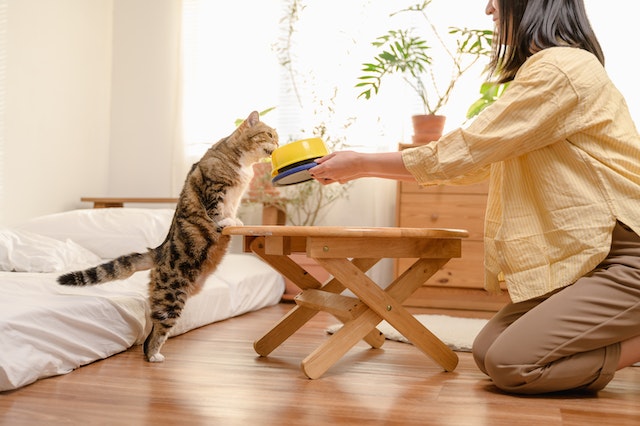What is the Healthy and Ideal Cat Weight

Do you know if your cat needs to lose weight? Fat cats are so common that you may not even realise your cat is overweight. However, the number of overweight and obese cats now exceeds the number of cats at a healthy weight, and veterinarians are seeing more and more super-obese cats.
For us, the problem is that we like to spoil our cats, and cats like to eat, so it’s easy to overfeed them a little bit.
This is something that needs to be taken seriously. Even just a few extra pounds can make your pet more prone to health problems such as type 2 diabetes and can make other conditions such as arthritis worse. It can even prevent them from grooming themselves properly. Keeping your cat at a healthy weight should make them healthier and happier.
What is the healthy and ideal weight for a cat?
Most domestic cats should weigh around 5 kilograms, but this may vary depending on the breed and body type. Siamese cats may weigh as little as 3 kilograms, while Maine Coon cats may weigh up to 10 kilograms and still be healthy.
Your veterinarian can let you know if your cat is overweight, but you can look for some signs yourself. When you look down on them, cats should have an hourglass figure, they shouldn’t have a sagging belly, and you should be able to feel their ribs.
How to maintain weight
Veterinarians say that weight gain in cats is usually attributed to the type and amount of food they are fed, as well as boredom.
When they complain, many owners will give in to make their pets happy.
But there are ways to prevent or suppress weight gain which is to use canned food instead of dry food, which often contains more protein and fewer carbohydrates. Canned food is also a good way to set different meal times for your pet. When owners leave a bowl of dry kibble out for them to eat all day, many cats will gain weight.
You can also reduce treats. Cats do well in other reward areas, such as playing with you.
Make your cat work for its food. Veterinarians have found that when cat owners use “food puzzles,” cats are healthier and calmer, and cats have to roll or manipulate them to get treats. You can hide some in the compartments of a wine box or cut one or more small holes in a plastic bottle and fill it with dry kibble. These puzzles slow down their eating speed while using their natural hunting and foraging instincts.
If you have more than one cat, you may need to feed the overweight cat in a separate room or place the healthy-weight cat’s food out of reach of the fat cat.
Consider using a microchip pet feeder, which makes food only available to animals registered on that feeder.
Before putting your cat on a diet, please take them for a physical examination to ensure that they do not have any underlying health problems. Replacing free-feeding with a specific diet may be enough, but heavier cats may need to switch to canned weight-loss food or a special prescription diet that contains more protein, vitamins, and minerals per calorie.
Be patient, if your goal is for your cat to lose one kilogram, it may take 6 months, or even up to a year. It is a slow process.
